Lumina. Christmas around the 1500's
Capilla Flamenca | Pueri
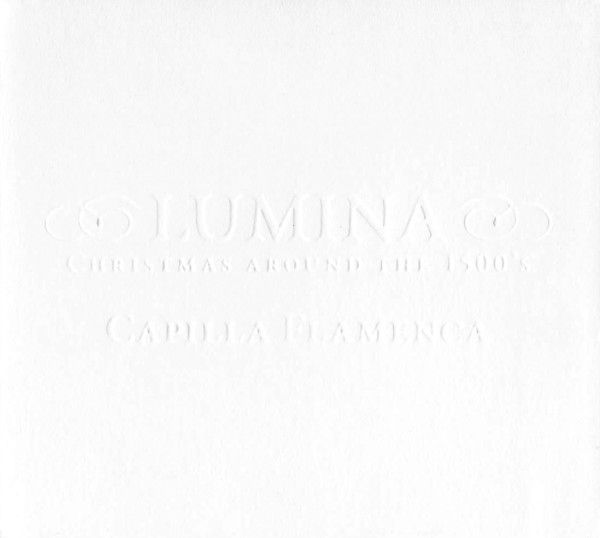
medieval.org
capilla.be
Eufoda 1366
2006
I. IN ANNUNCIATIONE DOMINI
Anonymus Br Ms II 270
1. Laet ons mit herten reynen | Ons is een kijnt gheboren [5:37]
Alexander AGRICOLA
2. Mijns herten troest (In minen sinn) [2:34]
instrumental
Heinrich FINCK
3. Rorate caeli [5:14]
Anonymus Br Ms II 270 | Ludwig SENFL
4. Maria sart, van edeler art [9:25]
Geert VAN TURNHOUT
5. Angelus Domini [1:45]
instrumental
Philippe VERDELOT
6. Beata es Virgo Maria [3:44]
II. IN NATIVITATE DOMINI
Anonymus Br Ms II 270
7. Puer nobis nascitur [1:43]
Antoine BRUMEL
8. Noe, noe [2:00]
instrumental
Heinrich FINCK
9. Puer natus est [5:54]
Pierre de LA RUE
10. Kyrie, Christe, Kyrie uit Missa Puer natus est [2:26]
instrumental
III. IN CIRCUMCISIONE DOMINI
Anonymus Br Ms II 270
11. Magnum nomen Domini [4:01]
Heinrich FINCK
12. Ecce advenit [4:27]
Johannes GHISELIN—VERBONET
13. Carmen in sol [2:04]
instrumental
Emanuel ADRIAENSEN
14. Slaepen gaen [2:39]
instrumental
Johannes REGIS
15. O admirabile commercium [7:26]

CAPILLA FLAMENCA
Marnix De Cat : contratenor, slagwerk, organetto
Tore Denys: tenor
Jan Caals: tenor
Lieven Termont: bariton
Dirk Snellings: bas
Jan Van Outryve: luiten
Liam Fennelly: viola da gamba
Thomas Baeté: viola da gamba
Piet Stryckers: viola da gamba
Patrick Denecker: blokfluiten, doedelzak
Pueri o.l.v. Marnix De Cat:
Leonard Boon, Lina De Cat, Carmen De Clercq, Paul Heyman, Ines Michiels, Janne Michiels.
Dirk Snellings: artistieke leiding
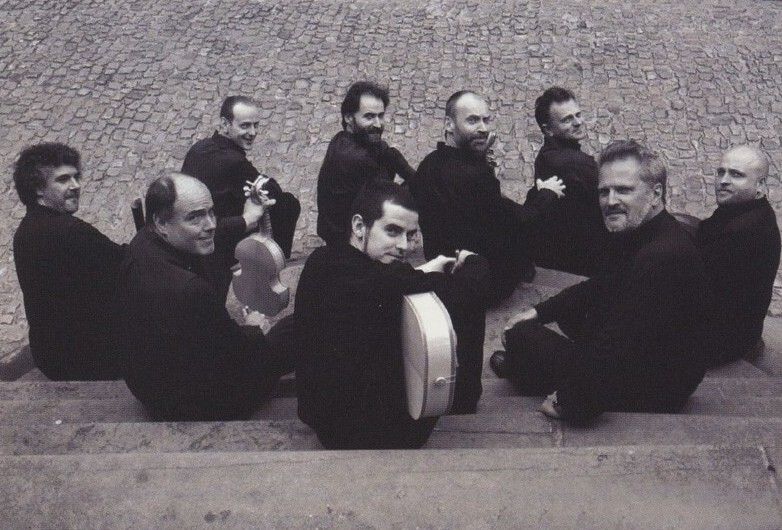
www.capilla.be
De Capilla Flamenca wordt structureel ondersteund door het Ministerie van de Vlaamse Gemeenschap
COLOFON
Digitale opname: Jo Cops
Montage: Jo Cops & Dirk Snellings
Abdij van 't Park, Leuven, juni en augustus 2006
producer: Dirk Snellings
Grafische vormgeving: Bart Luijten
Illustratie p. 7: MS II 270, Brussel, Koninklijke Bibliotheek. Facsimile © Alamire
(www.alamire.com)
© 2006 Davidsfonds Eufoda
English liner notes

KERST IN EUROPEES PERSPECTIEF OMSTREEKS 1500
KATELIJNE SCHILTZ
In
de liturgische kalender vormt Kerstmis één van de hoogtepunten van het
kerkelijk jaar. De geboorte van Christus (‘in nativitate Domini’) is
echter geen geïsoleerde gebeurtenis, maar wordt ingebed in een bredere
context, de zogenaamde kerstkring. De vier Adventszondagen die aan
Kerstmis voorafgaan, staan zodoende in het teken van de verwachtig van
de Verlosser (‘in annuntiatione Domini’). Na 25 december volgen ook een
aantal belangrijke feesten, met de viering van de Besnijdenis op 1
januari (‘in circumcisione Domini’) en Driekoningen of Epifanie op 6
januari als belangrijke hoogdagen.
Niet alleen in de literatuur,
schilder- en miniatuurkunst, maar ook in de muziek vormde de
kerstperiode een onuitputtelijke inspiratiebron. Het kerstverhaal, met
als protagonisten Jezus, Maria en Jozef, de herders, Herodes, de drie
wijzen en de engelen, vormde de basis voor talloze composities, die
stilistisch heel uiteenlopende gedaantes konden aannemen. Het programma
van de cd belicht deze diversiteit op kaleidoscopische wijze.
Een
centrale bron vormt een manuscript, dat momenteel bewaard wordt in de
Koninklijke Bibliotheek van Brussel (Handschriftenkabinet, MS II 270).
Het bevat, naast een reeks gedichten en raadsels, ook een collectie
Middel nederlandse en Latijnse liederen voor twee tot vier stemmen.
Inhoudelijk concentreren deze liederen zich voornamelijk rond de kerst-
en nieuwjaarstijd en rond bepaalde heiligen. Hoewel de exacte
ontstaanscontext van dit handschrift vooralsnog onzeker is, vermoedt men
dat het in de kringen van de Moderne Devotie gesitueerd moet worden of
er althans door beïnvloed is. Deze hervormingsbeweging binnen de
katholieke kerk, die haar oorsprong heeft in de 14de eeuw, stond — onder
impuls van Geert Grote (1340-1384) — voor een vernieuwing van de
spiritualiteit en het christelijke gemeenschapsleven. Binnen dit
devotionele kader streefde men op muzikaal vlak dan ook naar relatief
eenvoudige vormen van meerstemmigheid.
Het tweestemmige Ons is een kijnt geboren
is hiervan een duidelijke illustratie. Door de homofone declamatie, de
herhalingspatronen en de cadensen op het einde van elk vers wordt een
maximale transparantie bereikt, die de centrale boodschap van het
refrein ‘Laet ons mit herten reyne loven dat kyndeken cleyne: het brenct ons uuten weyne’ mooi in de verf zet. In Puer nobis nascitur
wordt de bekende gelijknamige melodie geciteerd in de tenor en door de
twee andere stemmen van een eenvoudige harmonisatie voorzien. De
populariteit van dit lied blijkt tevens uit een handschrift van de
collegiale kerk van Tongeren, dat de melodie inbedt in een vierstemmige
textuur. Iets ambitieuzer in compositietechnisch opzicht is Magnum nomen Domini,
waarin homofone passages afwisselen met canonische secties. Een
opmerkelijke aanwezige in het Brussels manuscript is zonder twijfel Mijns herten troest, mijn siels begheren. Het betreft hier immers een religieuze hertaling van het bekende driestemmige In mijnen sin hadde ick vercoren
van de polyfonist Alexander Agricola. Hier wordt het niveau van de
‘eenvoudige meerstemmigheid’ dus duidelijk overstegen en ingeruild voor
een boeiend spel van contrapuntische lijnen.
Ook de melodie van Maria sart, van edeler art,
die in het Brussels handschrift vierstemmig wordt getoonzet, laat ons
toe een link te leggen met het repertoire van de polyfonisten. Niemand
minder dan Ludwig Senfl, een Zwitsers componist die hoofdzakelijk in
Duitsland actief was, koos deze eenstemmige lofzang op Maria als
uitgangspunt voor maar liefst twee werken. In het vierstemmige Maria zart, von edler Art
laat Senfl, door een imitatieve behandeling van de stemmen, de melodie
in alle partijen weerklinken, nu eens onversierd in lange notenwaarden,
dan weer omspeeld en in een sneller ritme. Met zijn vijfstemmige zetting
gaat de componist nog een stap verder en combineert hij Maria zart simultaan met tekst en muziek van een andere ode aan de Moeder Maagd, Maria, du bist Genaden voll.
Deze
methode, waarbij een bestaande melodie in een contrapuntisch kader
verwerkt wordt, was een veel beproefde techniek onder de polyfonisten.
Ook Heinrich Finck maakte er in zijn motetten dankbaar gebruik van. Het
feit dat deze componist voor de toenmalige normen zeer oud is geworden
(ca. 1444/45-1527) is niet alleen vanuit biografisch oogpunt, maar ook
in muzikaal opzicht interessant. Aangezien Finck zo'n 60 jaar actief was
als componist, omspant zijn oeuvre als het ware drie generaties
polyfonisten: vanaf de periode van (de late werken van) Guillaume Dufay
tot na de dood van Josquin des Prez. Geen wonder dus dat zijn stijl heel
wat veranderingen heeft ondergaan en dat hij een aparte taal tussen oud
en nieuw heeft weten te ontwikkelen.
Alle op deze cd
vertegenwoordigde motetten van Finck zijn vierstemmig. Daarnaast maken
ze allemaal gebruik van de gelijknamige gregoriaanse melodie, die in
lange notenwaarden doorheen alle partijen zwerft, nu eens in de bassus,
dan weer in de tenor enz. In Rorate caeli herkennen we aan het
begin bij cantus en tenor duidelijk de melodie van het introïtus voor de
laatste zondag van de Advent. Naar het einde toe creëert de componist
een bijzondere climax door op het woord gloriam [Dei] een archaïsch aandoende fauxbourdon-schrijfwijze te hanteren. Ecce advenit dominator Dominus
is het introïtus voor het feest van Driekoningen. Conform het
liturgische gebruik voorziet Finck ook telkens een meerstemmige zetting
van het bijhorende psalmvers, in dit geval Deus, judicium tuum. Bij Puer natus est
is de gregoriaanse melodie van het introïtus van Kerstmis, met de
karakteristieke, vreugdevol stijgende openingskwint in alle stemmen
duidelijk hoorbaar.
Laatstgenoemde melodie duikt in de loop van
het programma nog verschillende keren op. Voor Pierre de La Rue vormt ze
zelfs de basis voor een hele mis. In tegenstelling tot Finck behoudt de
La Rue het bestaande materiaal voor tot de tenorpartij. Hierrond weven
de andere stemmen een uiterst kunstvolle polyfone textuur, die onder
meer gekenmerkt is door levendige ritmische passages en sequensen. Beide
Kyrie's zijn ternair, het Christe verloopt in een binaire maatsoort.
Het gregoriaanse Puer natus est speelt ook een rol in het monumentale motet O admirabile commercium van Johannes Regis. Regis was onder meer actief in Cambrai en Antwerpen. De theoreticus Johannes Tinctoris noemt hem in zijn Liber de arte contrapuncti
(1477) in één adem met coryfeeën als Ockeghem en Busnoys. Het werk is
vijfstemmig en incorporeert een hele reeks gregoriaanse melodieën rond
de kerstperiode, zodat een waar patchwork van citaten ontstaat. Naast Puer natus est treffen we in Regis' O admirabile commercium immers ook tekst en muziek van Magnum nomen Domini (een rijmsequentia voor Kerstmis) en Verbum caro factum est
(een responsorium voor de Metten van Kerstmis) aan. Met dit
polytekstuele motet creëert de componist dus een fascinerend web van
muzikale en tekstuele referenties: polyfonie in de ware betekenis van
het woord. Om het kerstgebeuren te accentueren, eindigt het motet
bovendien met de typische vreugderoep ‘Noe’. De invloed van Josquin des
Prez op Regis' driedelige werk is opmerkelijk, hetgeen er zelfs toe
heeft geleid dat het werk in een bepaald handschrift aan de princeps musicorum is toegeschreven.
Dat
de traditie om in één werk gelijktijdig meerdere melodieën te verwerken
ook in het verdere verloop van de 16de eeuw zou blijven bestaan, mag
ten slotte blijken uit het tweedelige motet Beata es virgo Maria — Ave Maria van Philippe Verdelot. Op de hoofdtekst Beata es virgo Maria projecteert Verdelot een opmerkelijke tweede laag. De septima pars citeert meer bepaald het begin van Josquin des Prez' bekende Ave Maria [...] virgo serena, dat in het tweede deel, bij wijze van ultieme hommage, zelfs gelijktijdig met het gregoriaanse Ave Maria zal weerklinken.
Op
die manier ontstaat een perfecte dwarsdoorsnede van wat het
kerstrepertoire in de Renaissance te bieden heeft: van monofone tot
groots opgezette zevenstemmige werken, van eenvoudige zettingen tot
complexe contrapuntische texturen, van instrumentale lofprijzingen tot
bewerkingen van bestaande melodieën, van gregoriaanse gezangen tot
gesofisticeerde verwijzingen naar het oeuvre van illustere collega's.
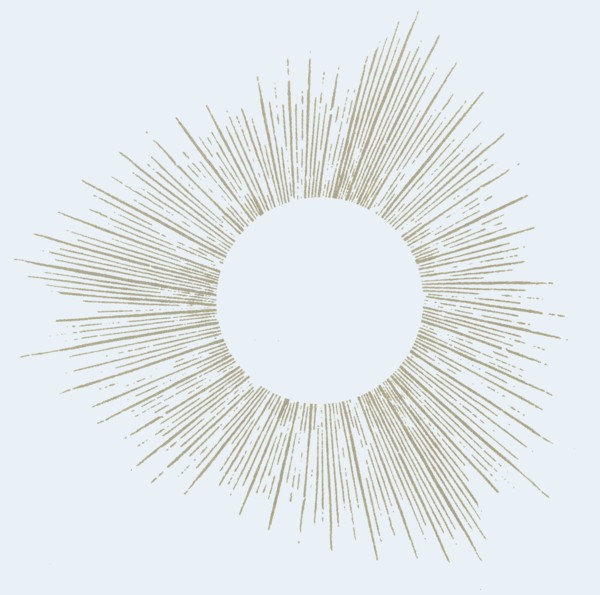
PUERI — CAPILLA FLAMENCA
Sinds 2005 werkt Marnix De Cat, contratenor van de Capilla Flamenca, met
een tiental jongens en meisjes om hen in de rijke wereld van de vocale
polyfonie omstreeks 1500 in te wijden.
Net als de 15de — 16de eeuwse koralen (geschoolde knapenstemmen) leert hun magister puerorum
(koraalmeester) hen vanuit eenvoudige liederen en het gregoriaans de
regels van de muziek en de zangkunst. De reputatie van deze koraaltjes
uit onze regio was van dien aard dat ze aan de belangrijkste Europese
hoven en kerken als zangertjes opduiken. Deze koraalscholen waren dan
ook de bakermat van alle ons nu bekende 15de en I6de eeuwse componisten
tot en met Bach!
Naast de eenstemmige liederen vertolken de Pueri
van de Capilla Flamenca ook de hoge bovenstemmen in de meerstemmige
composities zoals Jacob Obrecht dit aangeeft met puer primus et secundus
in het originele manuscript van zijn beroemde zesstemmige Salve Regina.
Van
oudsher zijn kerstliederen nauw verbonden met kinderstemmen. Het ligt
dan ook voor de hand dat de Capilla Flamenca hen inschakelt in deze
opname. Maar ook het oude meerstemmige kerstrepertoire verraadt deze
band: In de centrale bron voor deze kerstcd, namelijk het handschrift Ms
II 270 uit de Brusselse Koninklijke Bibliotheek, lijken de tweeen
driestemmige zettingen van de kerstliederen gemaakt op 'kindermaat'! Hun
bekoorlijke charme putten ze net uit deze eenvoud.
Daarnaast
vinden we deze bekende kerstliedjes terug als rode draad (cantus firmus)
doorheen het drukke stemmenweefsel van enkele uitzonderlijke
kerstmotetten. Zou het toeval zijn dat hun scheppers jarenlang actief
waren als magister puerorum in onze koraalscholen?
Dirk Snellings & Marnix De Cat
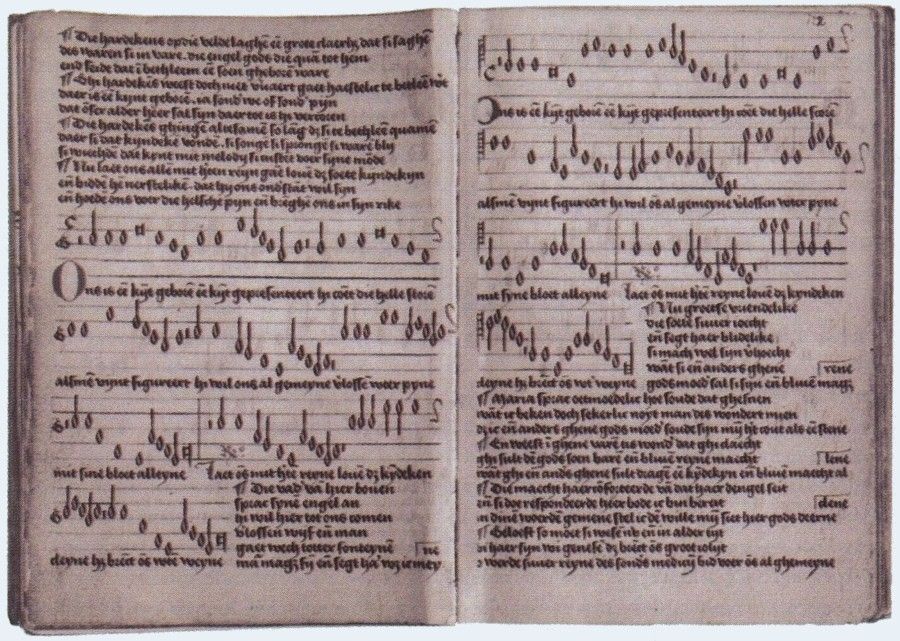
CHRISTMAS IN A EUROPEAN PERSPECTIVE AROUND 1500
KATELIJNE SCHILTZ
Christmas
forms one of the high points on the church's liturgical calendar. The
birth of Christ (‘in nativitate Domini’) is, however, not an isolated
event but is embedded in a broader context, the whole season of
Christmas. The four Sundays of Advent that precede Christmas fall under
the theme of the expectation of the Redeemer (‘in annuntiatione
Domini’). A number of important feasts also fall after December 25, with
the celebration of the Circumcision on January 1 (‘in circumcisione
Domini’) and Epiphany on January 6.
The Christmas period formed
an inexhaustible source of inspiration, not only for literature,
painting and illumination, but also for music. The Christmas story, with
its protagonists, Jesus, Mary and Joseph, the shepherds, Herod, the
three kings and the angels, formed the basis for countless compositions
that took on stylistically highly diverse guises. The program heard on
this CD takes a kaleidoscopic look at this diversity.
A central
source for the present works is a manuscript now held by the Royal
Library in Brussels (Handschriftenkabinet, MS II 270). Besides a number
of poems and riddles, this manuscript comprises a collection of
Middle-Dutch and Latin songs for two to four voices. Thematically, these
songs are mainly grouped around the Christmas and New Year period, as
well as a number of particular saints. Although the exact circumstances
of this work's origins remain unclear, it is thought to be a product of
the Modern Devotion movement, or at least to be influenced by it. This
reform movement within the Catholic church, which had its origins in the
14th century under the impetus of Geert Grote (1340-1384), called for a
renewal of spirituality and Christian community life. On a musical
level this devotional movement was expressed in a desire to create a
relatively simple form of polyphony.
The two-voice Ons is een kijnt geboren
is a clear illustration of this simplified polyphony. With its
homophonic declamation, repetitive patterns and cadences at the end of
each verse, the work achieves maximum transparency, which fittingly
underlines the central message of the refrain: Laet ons mit herten
reyne loven dat kyndeken cleyne: het brenct ons uuten weyne (Let us with
a pure heart praise that little child: he leads us out of misery). In Puer nobis nascitur,
the well-known melody of the same name is cited in the tenor and
harmonically supported by the two other voices. The popularity of this
song is also clear from a manuscript from the collegiate church of
Tongeren, which embeds the melody in a four-voice texture. Somewhat more
ambitious in compositional terms is Magnum nomen Domini, in which homophonic passages alternate with canonic sections. A noteworthy work in the Brussels manuscript is without a doubt Mijns herten troest, mijn siels begheren. This is a sacred contrafactum of the well-known three-voice song In mijnen sin hadde ick vercoren
by the polyphonist Alexander Agricola. Here the level of ‘simple
polyphony’ is clearly surpassed and instead we hear an intriguing
interplay of contrapuntal lines.
The melody of Maria sart, van edeler art,
set to four voices in the Brussels manuscript, again makes the link
with the repertoire of the polyphonists. Ludwig Senfl, a Swiss composer
mainly active in Germany, based two different works on this monophonic
song of praise to the Virgin. In the four-voice Maria zart, von edler Art,
Senfl employs imitation to allow the melody to be heard in all the
voices, sometimes unornamented in long notes, sometimes transformed into
quicker rhythms. In his five-voice setting, the composer goes a step
further, combining Maria zart simultaneously with the text and music of another ode to the Virgin, Maria, du bist Genaden voll.
This
method, in which an existing melody is reworked in a contrapuntal
framework, was often employed by polyphonists. Heinrich Finck, too, put
it to good use in his motets. The fact that, by the standards of the
day, this composer lived to a ripe old age (ca. 1444/45-1527) is
interesting not only from a biographical point of view, but also
musically. With an active career of more than sixty years, Finck's
oeuvre spanned three generations of polyphonists: from the period of
(the late works of) Guillaume Dufay until after the death of Josquin des
Prez. No wonder, then, that his style went through many changes and
that he developed his own musical language somewhere between the old and
the new style.
All the motets by Finck on this CD are for four
voices. They also all draw on particular Gregorian melodies, after which
they are named. These melodies move through all the parts in long
notes, now heard in the bass, now in the tenor, and so on. In Rorate caeli,
the melody of the Introit for the last Sunday of Advent is clearly
recognisable at the beginning in the cantus and tenor voices. Towards
the end the composer creates a remarkable climax by applying an archaic
sounding fauxbourdon technique. Ecce advenit dominator Dominus is
the Introit for the feast of Epiphany. Following the dictates of
liturgy, Finck also provides a polyphonic setting of the appropriate
psalm verse, in this case Deus, judicium tuum. In Puer natus est,
the plainchant melody is taken from the Introit for Christmas, with its
characteristic joyful rising fifth at the opening clearly audible.
The
latter melody turns up a number of times in the course of this program.
For Pierre de la Rue it even forms the basis for a whole mass. In
contrast to Finck, la Rue restricts the pre-existing chant material to
the tenor voice, weaving the other voices around it in an exquisitely
artful polyphonic texture, partly characterised by lively rhythmic
passages and sequences. Both Kyries are ternary, while the Christe has a
binary metre.
The Gregorian Chant Puer natus est also plays a role in the monumental motet O admirabile commercium by Johannes Regis. Regis was active in, among other places, Cambrai and Antwerp. In his Liber de arte contrapuncti
(1477) the theoretician Johannes Tinctoris names him in the same breath
with such masters as Ockeghem and Busnoys. The work is for five voices
and incorporates a whole series of melodies related to the Christmas
season. Besides Puer natus, Regis' O admirabile commercium also includes the text and music of Magnum nomen Domni (a rhymed sequence for Christmas) and Verbum caro factum est
(a responsary for Christmas Matins). With this polytextual motet, the
composer thus creates a fascinating web of musical and textual
references: ‘polyphony’ in the literal sense of the word
(‘multi-voices’). In order to accentuate the events of Christmas, the
motet ends with the typical joyful exclamation, "Noé!". The influence of
Josquin des Prez on Regis' three-sectioned work is noteworthy, to the
point that the work was in fact attributed to the princeps musicorum in a certain manuscript.
That
the tradition of simultaneously combining multiple melodies in one work
would continue throughout the 16th century is illustrated by the motet
in two parts, Beata es virgo Maria — Ave Maria by Philippe Verdelot. The composer projects a remarkable second layer on the main text Beata es virgo Maria, as the septima pars quotes the beginning of Josquin des Prez' famous Ave Maria [...] virgo serena, which in the second part, in a kind of ultimate homage, is sung simultaneously with the plainchant Ave Maria.
Taken
together, these works represent a perfect cross-section of the
Christmas repertoire in the Renaissance: from monophony to grand
seven-voice works, from simple settings to complex contrapuntal
textures, from instrumental works of praise to arrangements of existing
melodies, from Gregorian chants to sophisticated references to the works
of illustrious colleagues.
translation: Stratton Bull
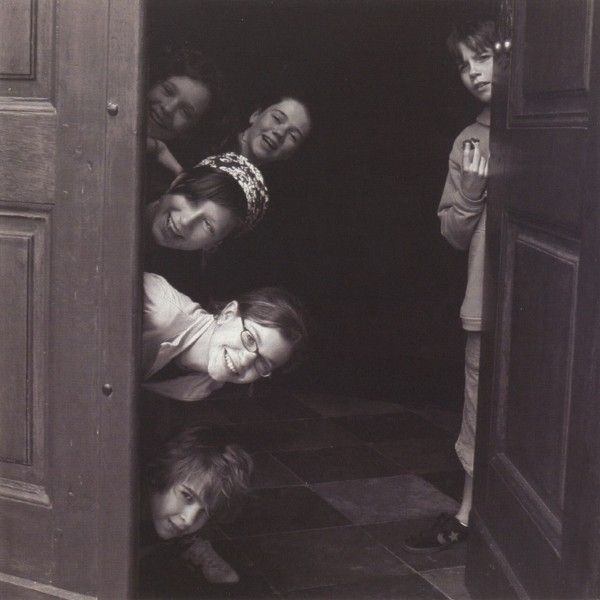
PUERI — CAPILLA FLAMENCA
Since 2005, Marnix De Cat, countertenor in the Capilla Flamenca, has
been working with some ten boys and girls in order to introduce them to
the rich world of vocal polyphony from the period around 1500.
Like the 15th- and 16th-century koralen (or choristers, the trained boy-singers), the young singers are instructed by the magister puerorum
(master of the choristers) in the rules of music and the art of singing
through simple songs and Gregorian Chant. The reputation of these
choristers from the Flemish region was such that they appeared at most
important European courts and churches. These choir schools were thus
the breeding-ground for all the most illustrious composers of the 15th
and 16th century, and right up to Bach!
Besides monophonic songs,
the Pueri of the Capilla Flamenca also perform the higher top voices in
polyphonic compositions, as indicated, for instance, by Jacob Obrecht
with the terms puer primus and puer secundus in the original manuscript of his famous six-voice Salve Regina.
Christmas
songs have from time immemorial been associated with the sound of
children's voices. It was thus natural for the Capilla Flamenca to
include them in this recording. Furthermore, the older polyphonic
Christmas repertoire reveals a link with children's voices: in the
central source for this Christmas CD, the manuscript MS II 270 from the
Royal Library in Brussels, the two- and three-voice settings of the
Christmas songs seem to be 'tailor-made' for children! They owe their
irresistible charm to this simplicity.
These familiar Christmas
songs then appear again as a golden thread (cantus firmus) throughout
the complex web of voices found in several remarkable Christmas motets.
Is it then surprising that the composers were themselves magister pueri in the Flemish choir schools?
Dirk Snellings & Marnix De Cat
translation: Stratton Bull






